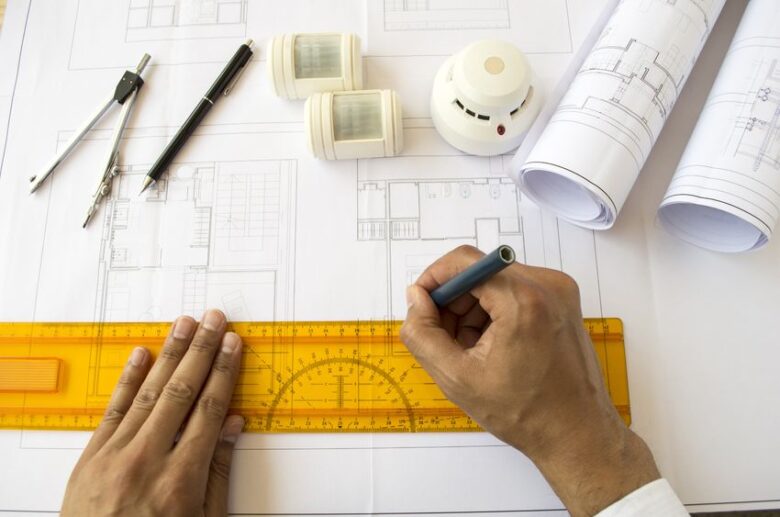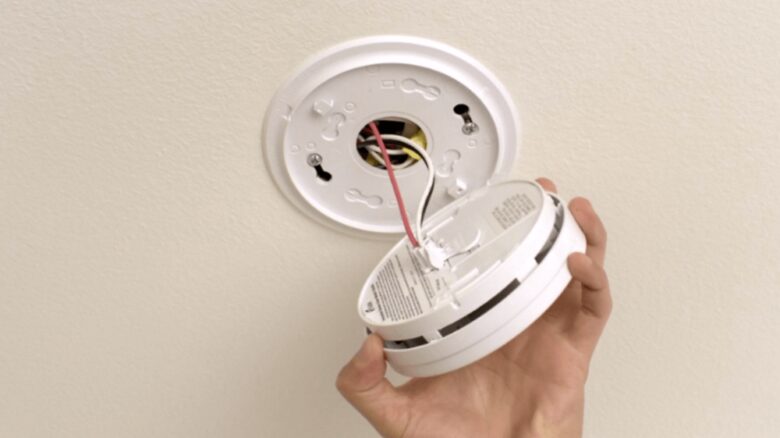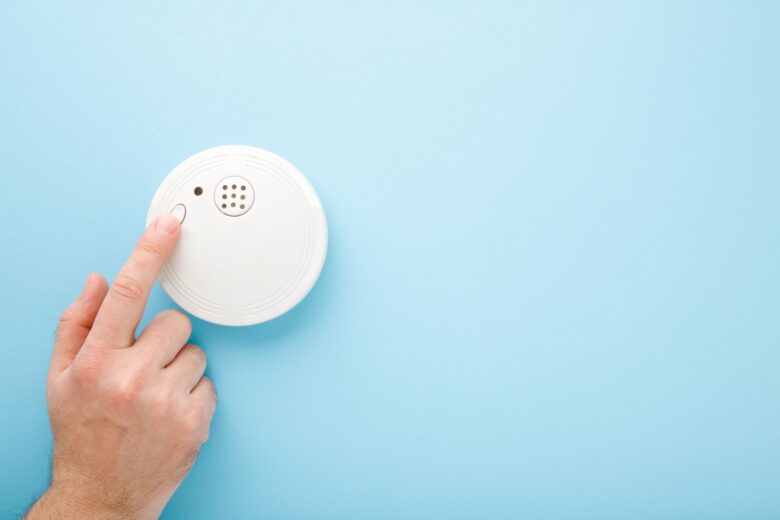Interconnected smoke alarms improve safety throughout the home by notifying all household members if a fire were to break out. They are particularly effective in large or multi-story dwellings where a single smoke alarm may not be heard through the entire property, especially when bedroom doors may be closed at night time and occupants could be asleep. Some interconnected smoke alarms are 240v hardwired systems, whilst others are long-life lithium battery-operated and don’t require access to your home’s electricity unit. Battery-powered photoelectric interconnected smoke alarms are relatively easy to install and do not require an electrician as there is no hardwiring involved. In fact, they only require a few steps.
The following blog article explains how you can install lithium battery-operated smoke alarms on your own. It will also help you learn how to determine whether these systems are working as intended. Before you follow these steps, you must carry out a basic risk assessment of the equipment you have on hand. If you discover any hazards, such as damaged ceilings or a ceiling that contains asbestos, you should refrain from following the below instructions and leave this task to an expert.
If your area and resources are free from risk, you can continue with the following:

Source: evadaresmokealarms.com.au
Contents
- Step one: Decide where you will install your interconnected smoke alarm system
- Step two: Set up your interconnected smoke alarm system
- Step three: Test your interconnected smoke alarm system
- Step four: Install your photoelectric smoke detectors by mounting them to the wall or roof
- Supplying the best-quality interconnected smoke alarms in Australia
Step one: Decide where you will install your interconnected smoke alarm system
Before you install interconnected smoke alarms you must first consider the legal requirements. For example, in Queensland, which currently has some of the strictest smoke alarm safety standards in Australia, you must install a smoke alarm in every bedroom, in the interconnecting hallway outside the bedrooms, and if it is a multi-story residence there must be at least one smoke detector on every level. Other Australian states and territories have other requirements, including how far from the wall smoke alarms can be positioned – to be sure it is always best to check with your local fire authority and state government agency prior to installation. All smoke detectors that you install must also be compliant to Australian Standard 3786:2014, be less than 10 years old, be photoelectric (not the old ionization type), and of course they must function as intended when tested.
When installing interconnected smoke detectors, you should also be wary that some spaces of the home will diminish the effectiveness of your system. Some places you should avoid placing your smoke alarms include:
- Outside a bathroom, steam may simulate smoke particles and could cause nuisance false alarms.
- In a kitchen area near the stove or oven as cooking vapor could cause nuisance alarms.
- In a garage as car exhaust fumes may simulate smoke particles and could cause nuisance alarms.
- Near windows or under ceiling fans as the movement of air means smoke may go undetected and not reach the alarm in the first instance.
- Too close to corners as it takes smoke longer to reach these areas or could create ‘dead air’ gaps where smoke won’t reach.
Once you have found the perfect location in each room, you can mark this with some masking tape or another temporary marker.
Step two: Set up your interconnected smoke alarm system
Before you begin mounting any smoke alarms to the wall, you need to ensure you interconnect the wireless system. To do so, you must choose one smoke alarm to be the master. You can do so by pressing and holding the test button until the green light on the alarm flashes three times.
Then release the button, and the red light will begin flashing rapidly for one minute. During this time, you have the opportunity to pair the student alarms to the master.
If you are a visual learner, we have a range of online instructional videos available for you to watch. You can also contact the team to ensure you haven’t missed a single detail.

Source: fireguardplus.co.uk
Step three: Test your interconnected smoke alarm system
To guarantee that your smoke alarm is operating to its full potential, you can test it. You can stimulate testing by pressing the alarm itself. However, after the alarms have been mounted, you can also test the alarm system by pressing the test button on the remote control (the remote control is an optional supplementary device to the smoke detectors). When you begin testing your smoke alarms, it may take up to 10-15 seconds for them to activate depending on how many alarms have been interconnected in the group. If all the alarms begin activating within 10- 15 seconds, this is normal and indicates they are working as intended. All the alarms will automatically silence themselves after approximately 15 seconds. It should be noted that the hush feature on the remote control can only be used when real smoke is detected, it does not silence the alarms during testing mode.
If an alarm doesn’t begin flashing, simply repeat the pairing process for it until it responds to the test.
Step four: Install your photoelectric smoke detectors by mounting them to the wall or roof
Returning to the marked spot on your roof or wall, use the provided screws and wall plugs to install your alarm’s mounting device. The team at Interconnected Smoke Alarms Australia recommends that you use an electric drill to avoid damage to the wall from excessive screwing.
You can also hire a handyman to complete this step if you aren’t comfortable doing so on your own.
Once the smoke alarm mounting brackets have been installed, you can slip the alarm into the mount. We recommend testing the alarms once per month to ensure they are working as intended.

Source: sfgate.com
Supplying the best-quality interconnected smoke alarms in Australia
The team at Wireless Interconnected Photoelectric Smoke Alarms Australia are passionate about providing the best quality interconnected smoke alarm systems to households across the country. We provide a variety of smoke detectors, and all smoke detectors that are ordered online come with product warranties, 90-day money-back guarantees, and so much more. Click here and check us out today and you won’t be disappointed!
